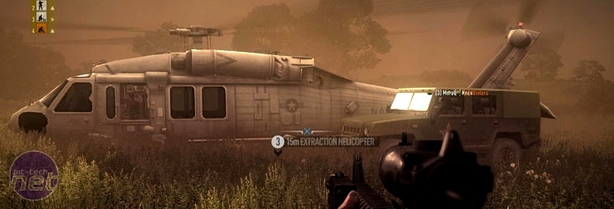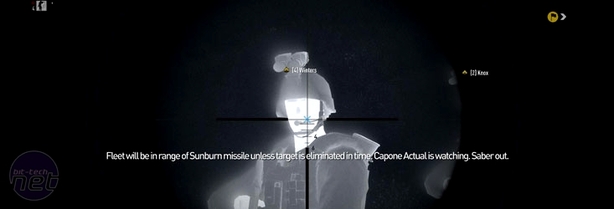
Operation: Conclusion
Operation Flashpoint: Dragon Rising's problem (apart from the laboriously long title) is the fact that it’s trying to entice in two audiences which are just utterly incompatible.On the one hand, it’s obviously a mil-sim and that innately means it’s going to appeal to the type of people who know the calibre sizes of antique weaponry. On the other hand though it’s also trying to the type of people who extend that attitude to Soul Calibur. The two can’t easily co-exist and the product as a whole starts to suffer for it, especially when it’s further compacted by the interface issues. One class of people will use keyboards and mice; the other gamepads and, for a game like this, that’s a huge problem.
Codemasters’ solution then has been to water the mil-sim genre down a bit, taking out some of the truly punishing elements such as wind ballistics and managing your load-out before missions. Mil-sim addicts will hate that.
Meanwhile, to placate the mil-sim fans and to help give the game some proper scope and so on, the huge battlefield and uncontrollable vehicles have been left in, with players having to hike miles in real-time before running through miles of open, empty countryside in real-time. Newcomers and FPS fans will loathe that.
There’s little middle ground between the two in the singleplayer game and, while that wouldn’t normally be a huge problem for something like Operation Flashpoint: Dragon Rising, it extends to the multiplayer and co-op games too. Requiring players to stay close to each other and limiting the size of matches are things we expect modders to quickly do away with because they really run very contrary to the type of freedom that games like this are supposed to be built on.
That’s not to say the game is without merit however; unlike most other mil-sims the experience is at least stable and consistent, and there’s still a great deal of reward to be gained from mastery of the game mechanics. Nailing a headshot for an instant kill from several miles away with the bullet flying cleanly through the windows of a house is still loads of fun.
Gunning down enemies from a jeep-mounted machine gun is a blast too – but it’s a tremendous shame that the game doesn’t have proper destructible vehicle physics like most other mil-sims. You can blow the cars up just fine, but more detailed tactics like shooting out the wheels to immobilise a target are a no-go.
While we don’t want to continue running Operation Flashpoint: Dragon Rising into the ground, on account of it being an occasionally
 good game and one which we can definitely see a lot of people vehemently defending, it’s a terrible shame that Skira itself is such a bland place. It’s an imagination wasteland, to put it bluntly – the few tiny hamlets proving totally empty of either objects or characters and the landscape being dotted with dozens of boring, unenterable shacks.
good game and one which we can definitely see a lot of people vehemently defending, it’s a terrible shame that Skira itself is such a bland place. It’s an imagination wasteland, to put it bluntly – the few tiny hamlets proving totally empty of either objects or characters and the landscape being dotted with dozens of boring, unenterable shacks.There are some to whom Operation Flashpoint: Dragon Rising will still hold promise and for those people we’re glad. They’ll play it and love the huge selection of vehicles and need for teamwork. Most people though won’t get that out of the game though and they’ll see it for what it is – a schizophrenic design built over a bland world. Connoisseurs will know that there are better options out there, while fans of regular shooters will be better served by Call of Duty and its ilk.
At the end of the day, if the question is whether Codemasters can replicate the success of the original Operation Flashpoint without the help of Bohemia Interactive Studios then the answer is simple. No.
Score Guide

MSI MPG Velox 100R Chassis Review
October 14 2021 | 15:04











Want to comment? Please log in.